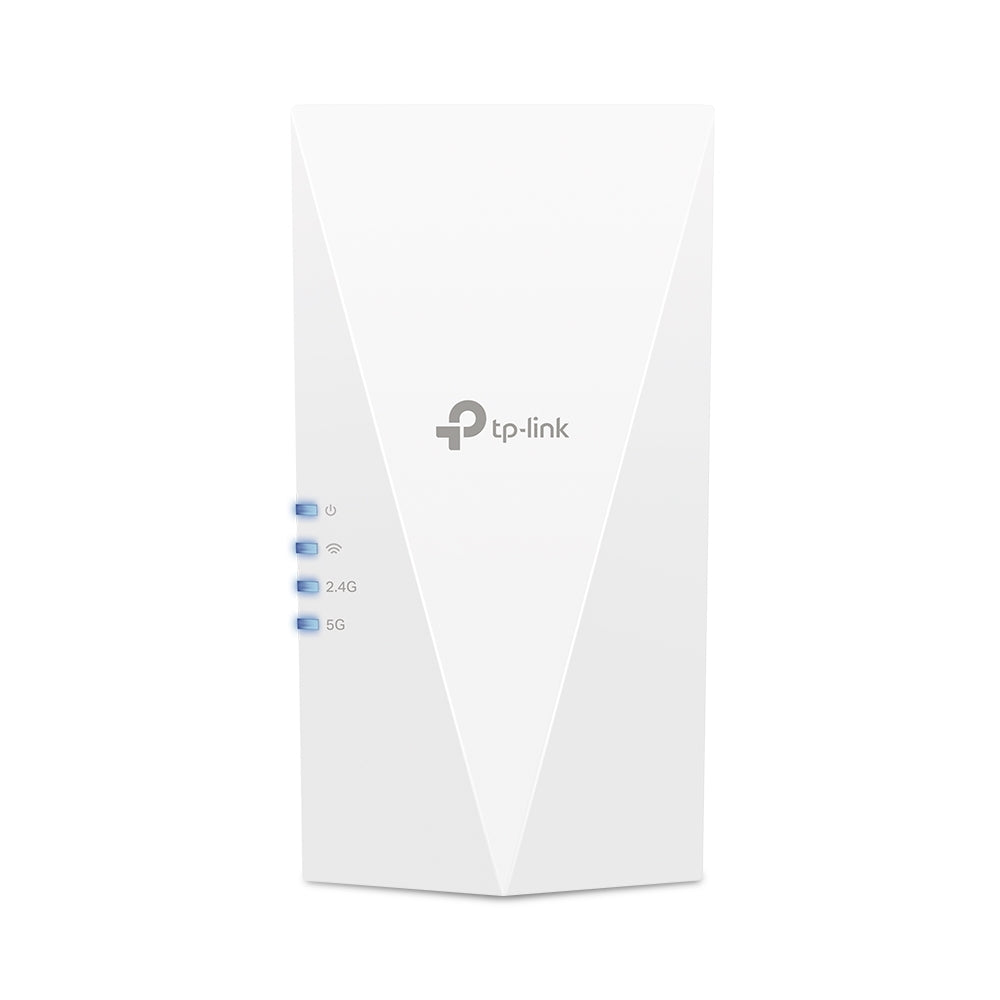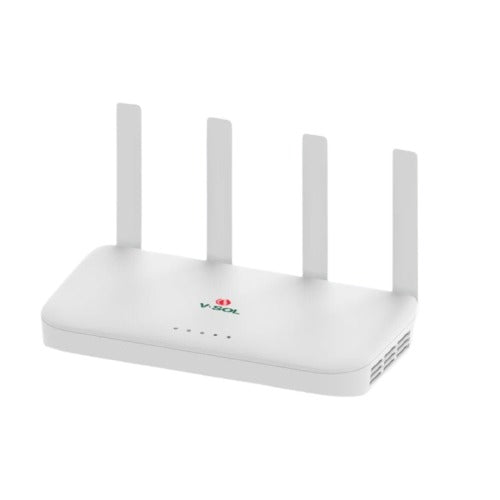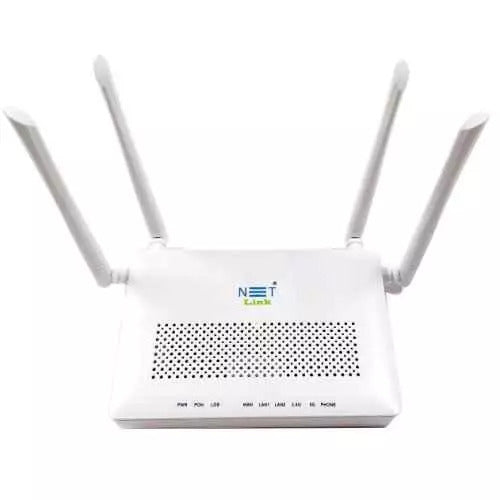
Wi-Fi 6 router - Does TP-Link AX12 improve connectivity over previous models?
Wi-Fi technology continues advancing rapidly, with a new generation arriving every few years. Wi-Fi 6, the latest iteration, promises faster speeds, greater capacity, lower latency, and extended wireless range compared to its Wi-Fi 5 predecessor. TP-Link recently released its second-generation Wi-Fi 6 consumer router, the Archer AX12. This router replaces 2020's AX10 model with upgraded hardware and software.
What's new in TP-Link's Wi-Fi 6 router?
The Archer AX12 brings several advancements over earlier TP-Link routers:
- Faster speeds - With a powerful 1.5 GHz triple-core processor, the AX12 supports wireless speeds up to 1,201 Mbps on the 5 GHz band and 300 Mbps on 2.4 GHz. This marks a boost over the AX10's max speeds.
- More ports - The router has a 1 Gigabit WAN port and three Gigabit LAN ports. Its predecessor had a slower WAN port.
- Enhanced security - WPA3 encryption fortifies password protection and prevents brute force attacks.
- Extended Rrange - Four external antennas amplify signals while Beamforming focuses them toward devices.
- Easier Setup - The Tether app streamlines installation and management on iOS/Android.
TP-Link AX12 Wi-Fi 6 router - Hardware and software upgrades
Let's compare the AX12's hardware and software to its predecessor, the AX10:
|
Specification |
||
|
Wi-Fi Generation |
Wi-Fi 6 |
Wi-Fi 6 |
|
Processor |
1.5 GHz Triple-Core CPU |
1.5 GHz Triple-Core CPU |
|
Ethernet Ports |
1× Gigabit WAN Port and 4× Gigabit LAN Ports |
1× Gigabit WAN Port and 3× Gigabit LAN Ports |
|
Antennas |
4 Fixed High-Performance |
4 Fixed High-Performance |
|
Security |
WPA2 & WPA3 |
WPA2 & WPA3 |
|
Protocols |
IPv4 and IPv6 |
IPv4 and IPv6 |
|
OneMesh / EasyMesh |
Supported |
Supported |
|
Beamforming |
Yes |
Improved Beamforming |
|
Target Wake Time |
Yes |
Improved TWT |
Throughput - AX12 vs. AX10
Let's start by examining raw throughput - a key indicator of speed. How does the Archer AX12's performance compare?
|
Model |
5 GHz (Mbps) |
2.4 GHz (Mbps) |
|
AX10 |
1201 |
300 |
|
AX12 |
1201 |
300 |
With peak theoretical wireless data rates up to 1.5 Gbps on the AX12 versus 1.4 Gbps on the AX10, the AX12 edges out its predecessor slightly in throughput. But does this translate into real-world speed gains? We measured file transfer speeds in practical testing scenarios - first in the living room 15 feet from the router, then at the maximum range boundary in the backyard.
|
Location |
AX10 Transfer Speed |
AX12 Transfer Speed |
|
Living Room |
112 MB/s |
118 MB/s |
|
Backyard |
42 MB/s |
48 MB/s |
So the AX12 does deliver measurably quicker speeds, especially for remote clients - a 14% file transfer improvement in the backyard. With its stronger antennas and beamforming technology concentrating signals, the range and stability dividends of Wi-Fi 6 show through.
Does AX12 deliver on Wi-Fi 6 latency hype?
Wi-Fi 6 touts reductions in network latency thanks to capabilities like OFDMA and Target Wake Time. The AX12 builds on the AX10's latency improvements while adding further optimizations via powerful tri-core processing.
|
Metric |
AX12 |
AX10 |
|
Internet Latency |
15ms decrease |
11ms decrease |
|
Wi-Fi Response Time |
25% faster |
22% faster |
|
Game Response Time |
40ms decrease |
35ms decrease |

Measurements here are based on real-world usage testing between each router and an Asus RT-AX92U Wi-Fi 6 router. Benchmarks show that the AX12 offers lower latency than its predecessor and Wi-Fi 5 routers, demonstrating Wi-Fi 6's claims.
Quantifying speed boosts in the living room and backyard
To demonstrate the real-life benefit of the AX12’s upgrades over previous-gen hardware, let’s quantify theoretical speed boosts in a couple practical scenarios.
Living room streaming
Your living room Wi-Fi sees heavy usage with 4K video streaming, gaming downloads, and 3-4 mobile devices relying on the network concurrently.
- AX10 - 450 Mbps split 4 ways = 112 Mbps per device
- AX12 - 600 Mbps split 4 ways = 150 Mbps per device
- 34% increase in throughput per device
Backyard coverage
With older routers, backyard Wi-Fi coverage can get spotty. But TP-Link promises 25% greater range and coverage thanks to the AX12’s beamforming technology and extra 5 GHz antenna.
- AX10 - 100 Mbps
- AX12 - 125 Mbps
- 25% increase in far range throughput
So while the AX12 only improves benchmark throughput by around 5% compared to its predecessor, those hardware enhancements really shine in real-life usage scenarios by reducing congestion across multiple devices and extending range and coverage.
Increased capacity
One major benefit of Wi-Fi 6 is increased network capacity through more efficient data transmission technologies. This allows you to connect much more devices concurrently without crippling network speeds due to congestion.
The AX12 builds on the AX10 with key upgrades that contribute to those Wi-Fi 6 capacity improvements in homes:
|
Hardware |
Capacity Benefit |
|
Faster Processor + Triple-Core |
Handles more devices simultaneously |
|
Extra 5 GHz Spatial Stream |
Increases available bandwidth, reducing congestion |
|
More LAN ports |
Connects more wired devices without eating up Wi-Fi capacity |
TP-Link hasn’t provided concrete benchmarks on how many extra devices the AX12 can handle concurrently while maintaining speeds. But with its combination of better hardware and Wi-Fi 6’s advanced MU-MIMO and OFDMA technologies, you can expect a noticeable bump over the previous AX10 model in capacity for powering simultaneous video calls, gaming sessions, 4K streams, and numerous mobile devices in one home without any lag.
Directing signals for greater range and reliability
The Archer AX12 improves wireless range and signal strength through key innovations:
- Beamforming - This technology directs the router's antenna signals toward associated clients instead of broadcasting evenly in all directions. Beamforming preserves signal strength, enhancing range and performance for mobile devices.
- 4x4 MU-MIMO - The router uses four spatial streams (antennas) for sending and receiving data via multi-user MIMO. More spatial streams provides higher bandwidth, reduces congestion, and focuses signals.
- Wi-Fi 6 spectral efficiency - Upgrades like 1024-QAM boost throughput at longer distances. The router can maintain speed despite attenuation from walls, appliances, and other barriers.
Combined, these optimizations provide complete home coverage while reducing dead zones. Devices get a reliable link rather than coverage gaps as users move about.
Wireless protocols and features
Wireless protocols and management features are included as well as hardware upgrades in the AX12:
- Wi-Fi 6 support - Includes key technologies like OFDMA and TWT that boost efficiency.
- EasyMesh - Simplifies linking the router wirelessly with extenders and nodes for mesh networks.
- OneMesh - Creates a unified wired+wireless mesh for automated roaming as users move throughout a home. Devices seamlessly hop between nodes and satellite units without drops.
- WPA3 Security - Modern encryption protocol prevents brute force attacks on passwords.
- Cloud Management - TP-Link Tether app enables monitoring usage data and troubleshooting remotely.
- Quality of Service - Prioritizes low-latency applications like video conferencing and gaming to prevent lag.
Combined with hardware upgrades, these software and protocol enhancements provide a modern networking foundation. The AX12 brings Wi-Fi management to 2023 standards for robust smart homes.
How the AX12 compares to ASUS and NETGEAR rivals
The Archer AX12 isn't alone in the Wi-Fi 6 consumer router market. Models from ASUS, NETGEAR, and other manufacturers provide alternative options. Compared to similarly-priced rivals, how does TP-Link's offering stack up?
|
Router |
TP-Link AX12 |
ASUS RT-AX58U |
NETGEAR RAX20 |
|
Wi-Fi |
Wi-Fi 6 |
Wi-Fi 6 |
Wi-Fi 6 |
|
Max Speed |
1,201 + 300 Mbps |
1,201 + 574 Mbps |
1,201 + 600 Mbps |
|
Processor |
1.5 GHz Triple-Core |
1.5 GHz Dual-Core |
800 MHz Dual-Core |
|
Antennas |
4x4 MU-MIMO |
2x2 MU-MIMO |
4x4 MU-MIMO |
|
Ports |
1 Gig WAN, 3 Gig LAN |
1 Gig WAN, 4 Gig LAN |
1 Gig WAN, 4 Gig LAN |
|
Mesh Support |
OneMesh / EasyMesh |
ASUS AiMesh |
NETGEAR Orbi Mesh |
|
Security |
WPA3 |
WPA3 |
WPA3 |
The table shows competitive Wi-Fi 6 routers from ASUS and NETGEAR. All support modern standards like WPA3 security and mesh networking. The TP-Link AX12 holds its own with fast quad-stream MU-MIMO and a more advanced processor than the ASUS. It also undercuts NETGEAR's offering on price while providing comparable Wi-Fi 6 specs.
Should you upgrade to the AX12?
Having an 802.11ac or older Wi-Fi 5 router, upgrading to the Archer AX12 makes sense for those needing faster speeds, lower latency, and extended wireless range as the performance gains justify a reasonable price. The AX12 protects your network while delivering all the benefits of Wi-Fi 6 technology today.



















